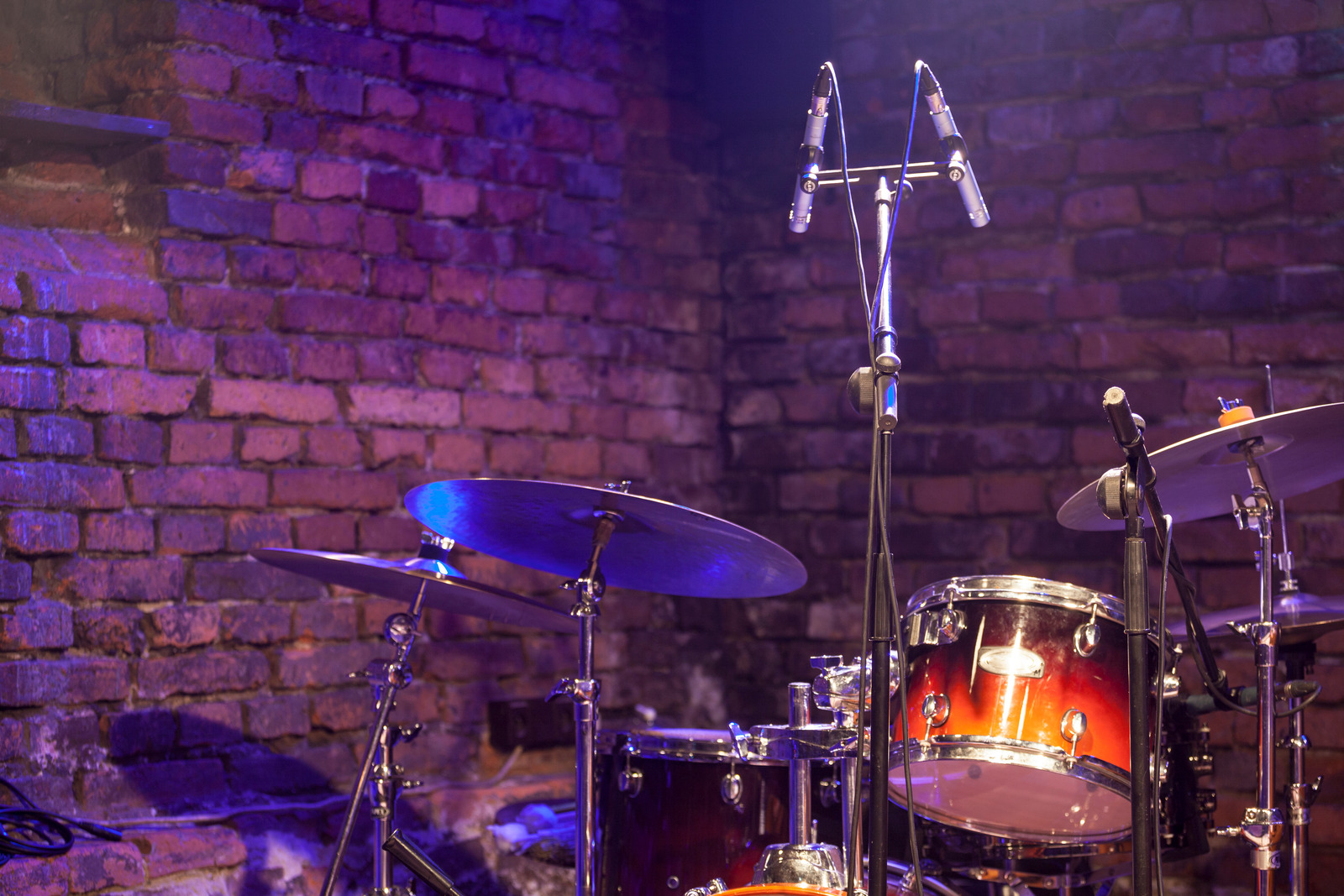The AKG C414 is the higher-end cousin of the AKG C214. These are some of the best professional overhead microphones for a drum kit thanks to their multipattern pickups, low-self noise characteristics, and versatility in recording acoustic instruments and vocals with the same level of audio fidelity.
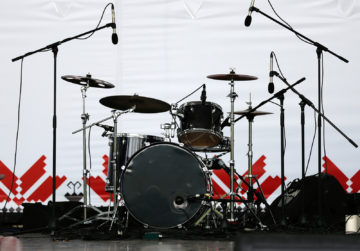
Overhead mics for drums are necessary for studio recording and playing live gigs. Apart from overhead mics, there’s no proper alternative to recording drums.
These drum overhead mics offer a great deal of flexibility, allowing drummers to set up the mics however they see fit, whether that’s creating an impressive stereo image or emphasizing the high-hats or bass drum.
So, if you’re in the market for a set, you’ve come to the right place. So let’s talk about some of the best overhead drum mics available right now and help you figure out the best setup for your studio room mics or live gigging drum kit.
Comparison of the Best Overhead Drum Microphones
| Best Overhead Mics for Studio WorkSee On Amazon | 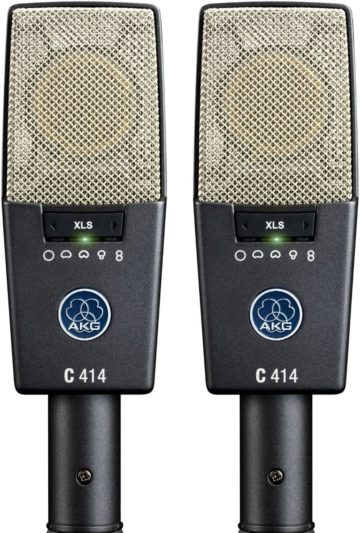 | AKG C414 | See On Amazon |
| Best Overhead Mics for Premium UsersSee On Amazon | 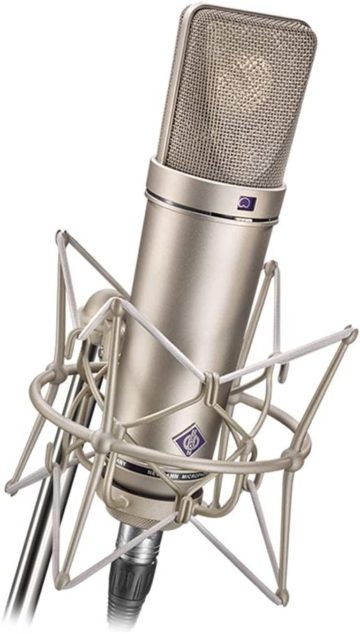 | Neumann U87 Ai Studio Set | See On Amazon |
| Best Overhead Mics for Budget UsersSee On Amazon | 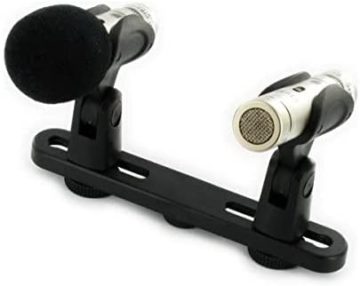 | Behringer C-2 | See On Amazon |
| Best Overhead Mics for Mid-Range UsersSee On Amazon | 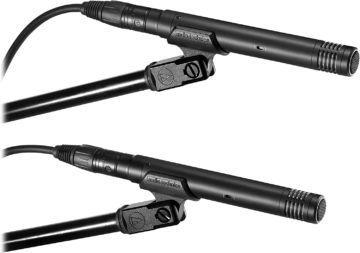 | Audio-Technica AT4041SP | See On Amazon |
| Best Overhead Drum Mics for Customizing Pickup PatternsSee On Amazon | 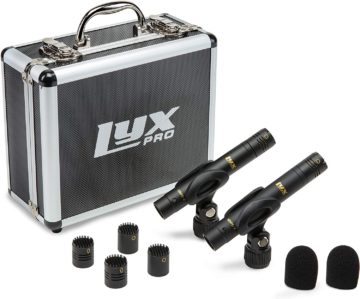 | LyxPro SDPC | See On Amazon |
| Best Stereo Pair Condenser Microphones for DrumsSee On Amazon | 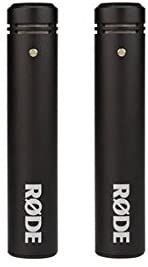 | Rode M5-MP Matched Pair | See On Amazon |
| Best High-End AlternativeSee On Amazon | 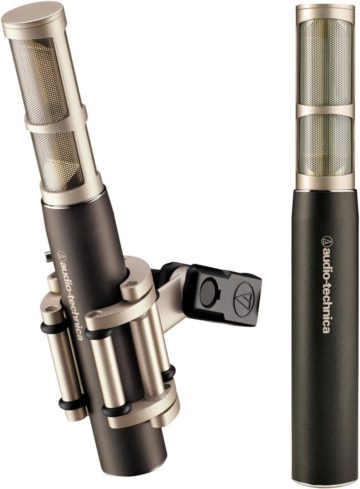 | Audio-Technica AT5045 | See On Amazon |
| Best Budget-Friendly AlternativeSee On Amazon | 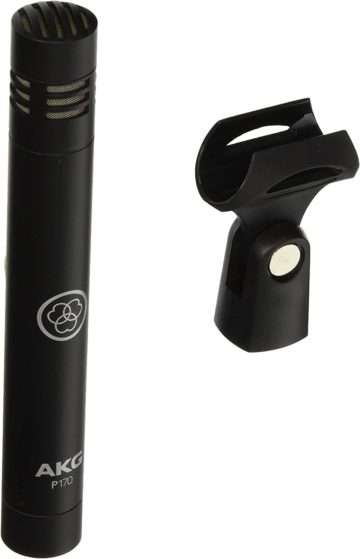 | AKG Perception 170 | See On Amazon |
| Best Hypercardioid Overhead Mic for DrumsSee On Amazon | 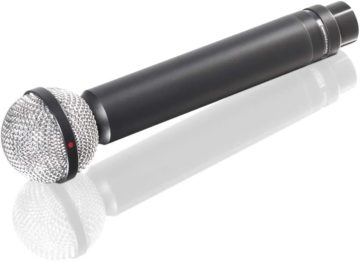 | Beyerdynamic M 160 | See On Amazon |
| Best Drum Overhead Mics OverallSee On Amazon | 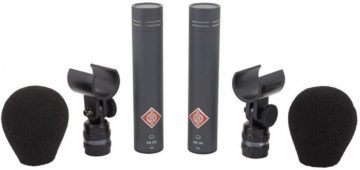 | Sennheiser Neumann KM184 | See On Amazon |
Reviews of the Best Overhead Drum Microphones
Tech Specs:
- Polar Pattern: Multipattern Condenser mic pair
- Self Noise: 13dB
- Sensitivity: 20mV/Pa
- Operating Voltage: 9-52V
- Impedance: 200/1000Ω
- Dynamic Range: 143dB
If you value performance and versatility from a condenser mic, the AKG C414 overhead microphones have got you covered. These are a pair of bulky-looking studio microphones, complete with windscreens, elastic spider suspensions, and a stereo mounting bar. So if you want a pair (or single) microphone for recording drums, other instruments, or vocals, this is where it’s at.
These condenser mics have a very neutral frequency response curve (20-20,000Hz) with nine different polar patterns, including wide cardioid, figure of eight, and omnidirectional. There are also three different attenuation levels and three bass filters for reducing wind noise, subsonic, and the proximity effect.
All things considered, this AKG C414 matched pair is a highly efficient and versatile overhead microphone setup capable of doing more than creating a great drum recording. Coupled with the best drummer headphones, you’ll have an amazing experience just jamming out or recording drums.
Here we have another studio-grade classic, the Neumann U87 Ai Set Z. This is another high-end cardioid condenser microphone that is highly versatile and allows for three different polar patterns.
Tech Specs:
- Polar Pattern: Omnidirectional, Cardioid, figure-8
- Self Noise: 26/23/25dB(Omni/Cardioid/8)
- Sensitivity: 20/28/22mV/Pa
- Operating Voltage: 48V
- Impedance: 200/1000Ω
- Dynamic Range: 117dB (Cardoid)
The Neumann U87 is a great option for sound engineers. If you’re willing to pay a little extra, you can get another similar mic and create a stereo pair for a high-performance overhead mic setup for your drums and other instruments.
This microphone supports three different patterns: cardioid, Omni, and figure of eight along with a couple of bass filters and a relatively lower self-noise threshold. There’s also a very neutral frequency response that’s ideal for acoustic instruments and vocals alike.
Although setting these up as a stereo pair for your drum overheads (or for a beginner home studio) might be too overkill, you can’t ever go wrong with these. Even if you prefer to use a separate matched pair, you can still use this as the third mic for your bass drum or any other section you want to be highlighted with great detail.
Most of the other mics on this list cost thousands of dollars, even for individual drum overheads. So if you’re only starting and looking for drum overhead microphones at an affordable price, the first one you should get is the Behringer C-2 matched pair.
Tech Specs:
- Type: Cardioid
- Self Noise: 19dB
- Sensitivity: -41dBV (open)
- Operating Voltage: 48V
- Impedance: 100Ω
- Dynamic Range: 140dB
These Behringer C2 matched pair consist of a couple of capsule mics featuring a cardioid polar pattern. These drum overheads are very easy to set up and already comes with a stereo bar, a couple of windscreens, and capsule holders.
These condenser mics are only 12″ long and 5″ wide, making them very low-profile and easy to set up in various situations, whether that’s acting as room mics for a studio or overhead microphones for a live gig.
The microphones have a low-frequency roll-off switch for -10dB along with a frequency response that emphasizes the mid-treble ranges (1kHz-8kHz). As such, it’s perfect for capturing that extra detail from high hats but also won’t shy away from the natural sound given out by an acoustic guitar or piano.
The Audio Technica AT4041SP matched pair is another great alternative for budding musicians. It’s got a decent price tag and good hardware that’s capable of managing the recording process without too much of a hassle.
Tech Specs:
- Type: Cardioid
- Self Noise: Unspecified
- Sensitivity: -36dBV (open)
- Operating Voltage: 48V
- Impedance: 200Ω
- Dynamic Range: 121dB
If you’re looking for something to get the job done, the Audio Technica AT4041SP overhead mic pair is a worthwhile option. These have a cardioid polar pattern and feature capsules that are only 11″ long.
Although you won’t get a stereo bar like other drum overheads on this list, there are a couple of windshields, mic stands, and a cool-looking wooden box to store and carry these microphones.
Similar to many other cardioid condenser microphones dedicated to drums, and other acoustic instruments, this pair has a relatively neutral frequency response with a slight emphasis on the treble ranges.
However, this microphone is nowhere perfect. You’ll find that these have a higher noise floor, making them less than ideal for professional recordings or some live gigs. On top of that, their lack of switchable filters and polar patterns can make it less desirable for the veterans out there.
Most of the other mics on our list only stood out as cardioid condenser microphones, with no room for other pickup patterns. Thankfully, the LyxPro SDPCROde M5 matched pair takes care of this, as it can handle Omni and Supercardioid polar patterns on top of the existing cardioid.
Tech Specs:
- Type: Omni, Cardioid, Supercardioid
- Self Noise: 24dB
- Sensitivity: -38dBV (open)
- Operating Voltage: 9-52V
- Impedance: 100Ω
- Dynamic Range: Approx 135dB
If you’re pondering about home studio packages or trying to figure out which pair of condenser mics would serve you best during the recording process (at an affordable price tag of course), look no further than the LyxPro SDPC-2.
This stereo pair offers a great drum overhead mic setup and can serve many other instruments (guitar amps, piano, etc.) thanks to their switchable polar pattern capsules and lightweight design.
This studio condenser microphone pair features a couple of windshields, mic clips, a handy aluminum carrying case, and three pairs of removable capsules for each polar pattern (Omni, cardioid, and super-cardioid).
These are a great pair of affordable drum overheads, but the lack of extended frequency response and low-cut filters can be a cause for concern.
The Rode M5 Matched pair is one of the best high-value stereo pairs on the market. These are great overhead mics for drums and make for a memorable live performance. For reliability and performance from a stereo pair, the Rode M5 pair is unmatched.
Tech Specs:
- Type: Cardioid
- Self Noise: 19dB
- Sensitivity: -34dBV (open)
- Operating Voltage: P24 and P48
- Impedance: 200Ω
- Dynamic Range: 121dB
The Rode M5 MP small diaphragm condensers are well-designed and they can capture sound with a higher level of audio fidelity. These cardioid condenser microphone pair come with a couple of WS5 pop filters and RM5 mic clips with the option to purchase additional accessories such as XLR cables, mic stands, and audio interface.
The capsules are surprisingly compact. They are almost 4 inches long and only 0.7 inches thick. The mics featured P24 and P48 phantom power configurations and has a very low self-noise of 19dB.
Along with that, the Rode MP pair has a relatively flat frequency response, making it versatile for a wide audio range, not just cymbal sound but also for snares, bass, and other acoustic instruments.
The Audio Technica AT5045 is another great high-performance pair of overhead mics for drums. It has a higher level of audio fidelity that’s ideal for studio recording or live gigs. So if you’re looking for premium overhead microphones that are well worth their price, these are the ones to beat.
Tech Specs:
- Type: Omni, Cardioid
- Self Noise: 8dB
- Sensitivity: -35dBV (open)
- Operating Voltage: 48V
- Impedance: 1000Ω
- Dynamic Range: 141dB
The Audio Technica ATH 5045 feature a large diaphragm cardioid condenser microphone which doesn’t seem to follow the regular pattern of capsule mics with gunmetal exteriors. Instead, it goes for a larger 1″ stick-type body, which is almost 7″ long. The mic is exceptionally designed and stands out as one of the best microphones in the premium market.
These do not necessarily arrive as matched mics, but you can purchase a couple of them if necessary. Along with the two microphones, you also receive the complimentary pop filter and mic clip.
Performance-wise, these do not disappoint. The Audio Technic ATH5045 features a very low self-noise configuration (8dB), along with impeccable sensitivities. On top of that, it has a wide dynamic range of 141dB and favors a variety of instruments, not just drums.
Overall, these are the best mics for a home studio as long as you have considered your overall budget regarding the rest of the necessary components.
If you’re looking for another affordable mic setup for your drums and acoustic guitars, the AKG Perception 170 is a viable alternative. It’s compact, got a stable and affordable price, and will get (most) of the job done.
Tech Specs:
- Type: Omni, Cardioid
- Self Noise: 19dB
- Sensitivity: 15mV/Pa
- Operating Voltage: 44-52V
- Impedance: 200/1000Ω
- Dynamic Range: Unspecified
The AKG Perception 170 is a compact capsule overhead mic that is 11″ long with a 3.5″ diameter. The only included accessory it provides is a mic clip, and you don’t get a stereo bar or pop filter. Thankfully, it doesn’t need one and manages fine with the original housing and -20dB attenuation setting.
This mic only comes as a single mic, and you will have to purchase multiple mics separately for setting up matched microphones or different configurations. The exterior is surprisingly durable and has enough capabilities to record audio at a maximum SPL of 155dB.
Also, the device has sufficiently low self-noise and supports a range of 44-52V phantom power. It’s not specified for drums but retains a neutral frequency response making it viable for many other instruments.
For musicians who want a better focus on their drums, especially during high-noise environments, the Beyerdynamic M160 hypercardioid is a great option. It’s relatively affordable and easy to use.
Tech Specs:
- Type: Hypercardioid
- Self Noise: >25dB at 110°
- Sensitivity: -60dBV
- Operating Voltage: Unspecified
- Impedance: 200/1000Ω
- Dynamic Range: Unspecified
Although double ribbon microphones such as the Beyerdynamic M160 can be heavier and bulkier than your usual small diaphragm cardioid condenser, these mics provide more natural sound with better noise isolation.
The mic has a well-designed exterior with a sturdy-looking metal grille and black-matte plastic stick body. It doesn’t come as a matched pair, but it’s compatible with a lot of common accessories and it’s very easy to set up.
The overall frequency range might be limited to 40-18,000Hz but it has a clear and natural sounding characteristic which is ideal for recording drums in a studio. The mic is capable of recording many instruments ranging from acoustic guitar, electric guitar amps, brass instruments, drums, kick drums, cymbal sound, and many more.
The Neumann KM184 Stereo pair of condenser microphones offer the best value for money in terms of features and performance. These cardioid microphones have an amazingly detailed frequency response and they are capable of recording not just your drums but anything else you might throw at them.
Tech Specs:
- Type: Cardioid
- Self Noise: 13dB
- Sensitivity: 15mV/Pa
- Operating Voltage: 48V
- Impedance: 50/1000Ω
- Dynamic Range: 138dB
These Neumann KM184 matched pair has very sleek-looking capsules with a durable metal exterior. They are only 4.2″ long with a 0.8″ diameter, making them the most compact condenser microphone we’ve encountered so far.
This matched pair has a very low self-noise characteristic and despite their smaller form factor, can handle sufficiently loud instruments. (Maximum SPL of 138dB at 0.5% THD.)
The mics take in 48V phantom power but unfortunately, do not include the pop filter and mic clip. These accessories need to be purchased separately, especially if you’re going for the matched pair.
The overall frequency response is quite stable, with the microphone reaching an equilibrium state at 100Hz and remaining flat until it bumps into a slight hill at 8.5kHz, which is probably where the cymbals and brass instruments get their “shine.”
Overhead Drum Mics Buying Guide
In terms of microphones, “recording quality” is a somewhat vague term, however, it is the best measure of the performance characteristics of a microphone that can be understood by beginners and veterans alike.
Let’s talk about these more in detail, but don’t forget: no matter how good your microphone is, the preamp can act as a bottleneck, so take note of that as well.
Sensitivity
Although recording quality is subjective, most condenser microphones with lower sensitivities are considered to be better for drums because they measure loud sounds that are distinct and separate from each other. So when the sensitivity is lower (such as 15mV/Pa) there’s more nuance to most high SPL sounds a drum has, whether that’s the kick drum, high-hats, or snare.
Self Noise
Apart from sensitivities, another important specification you should consider is the self-noise level of the microphones (which can also exhibit itself as a microphone hiss). While dynamic and ribbon microphones do not necessarily consist of self-noise, condenser microphones (which is almost 90% of the options on this list) have a significant amount of self-noise.
A lower amount of self-noise is always better, but if you’re looking for an inexpensive matched pair for live gigs, you can make do with a higher self-noise threshold (preferably 20-30dB). In studio environments, self-noise above this range can be noticeable, especially if the drums or other instruments are placed far away from the mic.
Dynamic Range
The Dynamic range of the microphone refers to the range (or sometimes maximum) amount of decibels that your microphone can handle without distorting.
Although it’s always better to have a higher dynamic range for better nuance, it makes more sense to consider the situations, specifically the highest and lowest SPL that the drums can reach.
As you can see from most of our product reviews, a dynamic range of 120-140dB is always considered a decent amount.
Frequency Response/Range
The frequency range itself is not a direct indicator of good sound quality. When it comes to the range, such as 20-20,000Hz, it is signifying the range of audible frequencies that the microphone can capture.
To get a better idea of the overall sound quality, it’s a good idea to consider the frequency response curve instead. From the curve, we can see if the microphone records audio accurately or if they add some emphasis to certain frequencies.
Most often, you need to go for a frequency response curve that’s very flat. To understand more about frequency response, please check out this article.
Pickup Pattern
As you may have seen, various microphones come with switchable or swappable capsules for different pickup patterns.
Although the option of having extra omnidirectional or hypercardioid capsules is great, we don’t necessarily need anything else other than a cardioid polar pattern for drum overheads.
Price
Yes, most of these cardioid condenser microphones for drum overheads can be expensive, especially if you want the higher-quality ones.
There’s not a lot to go on here, you can find decent ones for $50 or $100, while the other high-end alternatives will range in the thousands of dollars.
Durability
Of course, durability is a big issue when it comes to sensitive devices such as microphones. You need these devices to be sturdy whenever you’re out on the road.
When considering durability, it’s always a good idea to get an appropriate case for your microphones. Most devices will come with a wooden or aluminum case with foam cutouts for the capsules and mic clips, so keep an eye out for these types of devices.
Conclusion
Setting up overhead mics is more of an art than a science. In most cases, you can’t go wrong with a stereo pair and extra mics for emphasizing other sound sources. Even though I couldn’t help you with your mike placement, hopefully, you’ve got a better idea of the different types of overhead mics on the market.
